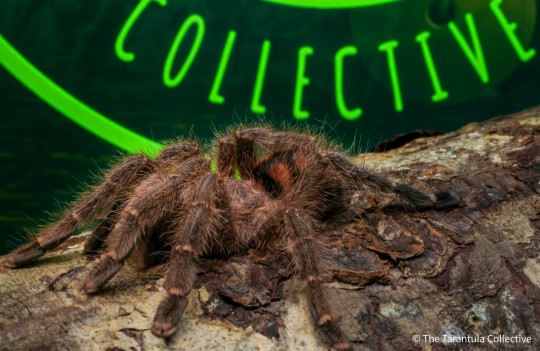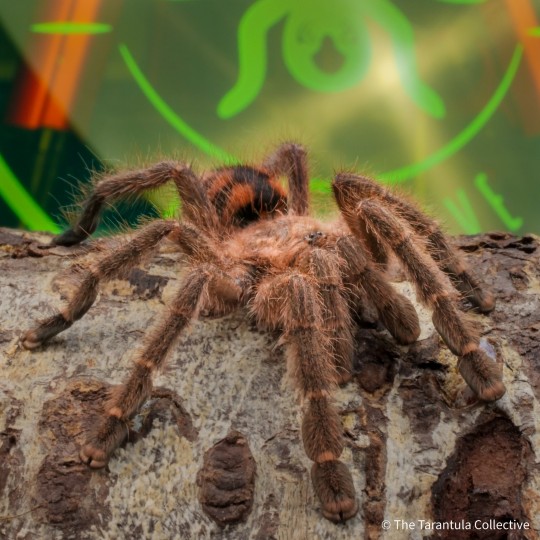check out our youtube channel HD Arachnids for more great Tarantula related content!
Don't wanna be here? Send us removal request.
Text
Move along folks, nothing to see here....

1 note
·
View note
Text
Avicularia avicularia morph 6. The metallic pink toe. Juvenile female

#tarantula#animals#arachnids#bugblr#nature#petblr#pets#spider#tarantulas#reptiblr#pink toes#pinktoe#avicularia#avicularia avicularia
4 notes
·
View notes
Text
Haploclastus devamatha mature female. Love this girl but almost never get to see her.

#tarantula#animals#arachnids#bugblr#nature#tarantulas#spider#petblr#pets#reptiblr#earthtiger#pethole
25 notes
·
View notes
Text
Brachypelma boehmei looking fresh and fine enjoying its first meal post molt.

24 notes
·
View notes
Text
Ephebopus cyanognathus the Blue Fang Tarantula








#tarantula#animals#arachnids#bugblr#nature#petblr#pets#spider#tarantulas#exoticpet#macrophotography#macroinsect#macro photography#macroshot#macro#macroworld#macro brilliance
3 notes
·
View notes
Text
Hey! I'm watching you....

#tarantula#animals#arachnids#bugblr#nature#petblr#pets#spider#tarantulas#exoticpet#macroinsect#macro photography#macroshot#macro#macrophotography#arachnology#arachn0philia#arachnophobia
59 notes
·
View notes
Text
"Blueberry" Phormictopus sp dominican purple female. Not so blue after this last molt haha. Look at that cute little face 😍

#tarantula#animals#arachnids#bugblr#nature#petblr#pets#spider#tarantulas#exoticpet#Phormictopus#bluetarantula
13 notes
·
View notes
Text
Tarsal claw leg IV female Pseudoclamoris gigas

#tarantula#animals#arachnids#bugblr#nature#petblr#pets#spider#tarantulas#exoticpet#macro#macroshot#macroinsect#macro photography
56 notes
·
View notes
Text
Molted tarantula eyecaps, Chilobrachys fimbriatus male, the Indian Violet Earth Tiger.

#tarantula#animals#arachnids#bugblr#nature#petblr#pets#spider#tarantulas#exoticpet#macro photography#macroinsect#macroshot
20 notes
·
View notes
Text
Tarantula fangs, Chilobrachys fimbriatus male, the Indian Violet Earth Tiger

#tarantula#animals#arachnids#bugblr#nature#petblr#pets#spider#tarantulas#exoticpet#macroshot#macro photography#macroinsect#macro
24 notes
·
View notes
Text
Tarantula rehousing 101 our very first video premiere! Friday 7pm central time. Join us for live chat while we all watch together. Smash that thumbs-up and reminder button and we hope to see you there! https://youtu.be/OFu7Bra5k3w
youtube
0 notes
Text
Got our newest feeding vid up, give it a look and consider subscribing to our channel!
https://youtu.be/7Bt43MItuq8
youtube
2 notes
·
View notes
Text
Juvenile female Therephosa stirmi having a snack

4 notes
·
View notes
Text
Acanthoscurria geniculata spiderling



#tarantula#animals#arachnids#bugblr#nature#petblr#pets#spider#tarantulas#exoticpet#spiderblr#tarantulasoftheworld#tarantulablr#petthing#spooder
6 notes
·
View notes
Text

The Avicularia minatrix, known commonly as the Redstripe Pinktoe, Venezualen Red Stripe and Red Slate Pinktoe Tarantula, is one of my FAVORITE dwarf species! This New World arboreal tarantnula is one of the smallest and most reclusive species in the hobby, except for maybe the T. seladonia.
Scientific Name: Avicularia minatrix
Common Name: Red Slate Pink Toe Tarantula
Type: Arboreal
Location: Venezuela
Diagonal Leg Span (DLS): up to 2.5-3in (7cm)
Growth Rate: Medium/Fast
Life Expectancy: Females (10 to 12 years) | Males (2 to 3 years)
Recommended Experience Level: Beginner
Described by Pocock, 1903 The Red Slate Pink Toe, is known scientifically as the Avicularia minatrix, is a NEW WORLD arboreal dwarf tarantula from Venezuela. This is the smallest tarantula in the Avicularia genus, only growing to about 2.5” inches in size. In nature, this species tends to make their homes in the Bromeliads and can be found in the coastal regions of Venezuela as well as the areas near Maracay. In nature, 2 or 3 A. minatrix have been observed sharing on bromeliad making separate web tunnels in different parts of the same plant. Though it seems they tolerate living closely together out of necessity and aren't a true communal species that can be kept together in one enclosure in captivity. This species can be difficult to find available for sale and usually are more expensive than other Avicularia species, making it a VERY risky and costly to attempt to experiment keeping them communally. In fact, it is not something I personally would try or suggest others to do. Part of the reason they can be difficult to come across and expensive to purchase is because they have very few eggs per sac compared to other species of tarantulas. Typically there seems to be as little as 20 eggs per sac and at most maybe 40 eggs. That along with the fact dwarf species don't seem to be as sought after as larger species of tarantulas, there may not be a demand large enough to encourage breeders to constantly attempt to produce large numbers of egg sacs.


Unlike other species of Avicularia, Caribena, or Ybyrapora tarantulas, the minatrix is probably my most reclusive NW arboreal. I see my Psalmopeous species more than I see my minatrix. Mostly she spends her time huddled up in her web tunnels and rarely is out on display or walking around her enclosure. Which is a shame because they are such a beautiful species. Not only is this species shy and reclusive, but they can be very skittish as well. Mine will quickly bolt around its enclosure and dive into hiding if I happen to catch her out and frequently will run away from its prey when I feed her before actually pouncing on it and eating. This isn't a species I would attempt to handle, not because it has powerful venom, in fact it has been theorized, though not yet scientifically proven, that they have some of the weakest venom of any species of tarantula, and not because of the urticating hairs, as Avicularia species only posses Type 2 urticating hairs meaning they don't kick the hairs up in a cloud when they feel threatened like other species of new world tarantulas, the only way Type 2 urticating setae can be transferred is with direct contact. So if your Avicularia is rubbing its abdomen on you, it isn't showing affection, it is trying to rub off itchy hairs on you. But I wouldnt handle this species because it is so small and skittish. My concern is that because it is easily startled, it will attempt to bolt or jump and escape, become hurt, possibly even fatally. So this is a species I keep safely in its enclosure and am cautious when feeding and rehousing.

See more about how I care for this species here:
youtube
13 notes
·
View notes
Text
Xenesthis Intermedia freshly molted, looking bright and beautiful.

2 notes
·
View notes



